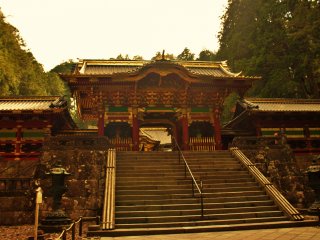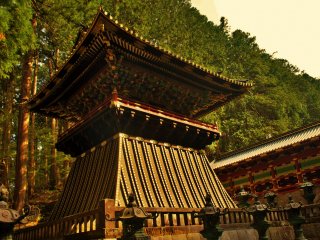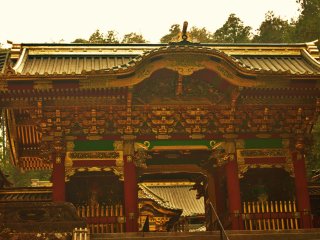The Taiyu-in Reibyō is the shrine and mausoleum of Iemitsu, 3rd Tokugawa Shogun. Just a few minutes walk from the main Tosho-gu shrine in Nikko, the final resting place of Lord Tokugawa Iemitsu is an amazing example of Nikko-bori (Nikko wood carving style). Construction of the shrine was started in 1652. Today Taiyu-in is administered by the Rinnō-ji Temple and is one of the UNESCO World Heritage sites in Nikko. Although smaller than its neighboring Tosho-gō shrine, Taiyu-in is in no way lessened in its beauty. Taiyu-in is a stunning monument to the third lord of the Tokugawa dynasty. Take a closer look at the elaborate details, carvings, and color.
- 1 min read
Taiyu-in Reibyō Mausoleum in Detail
A closer look at the tomb of Shogun Tokugawa Iemitsu

Community writer
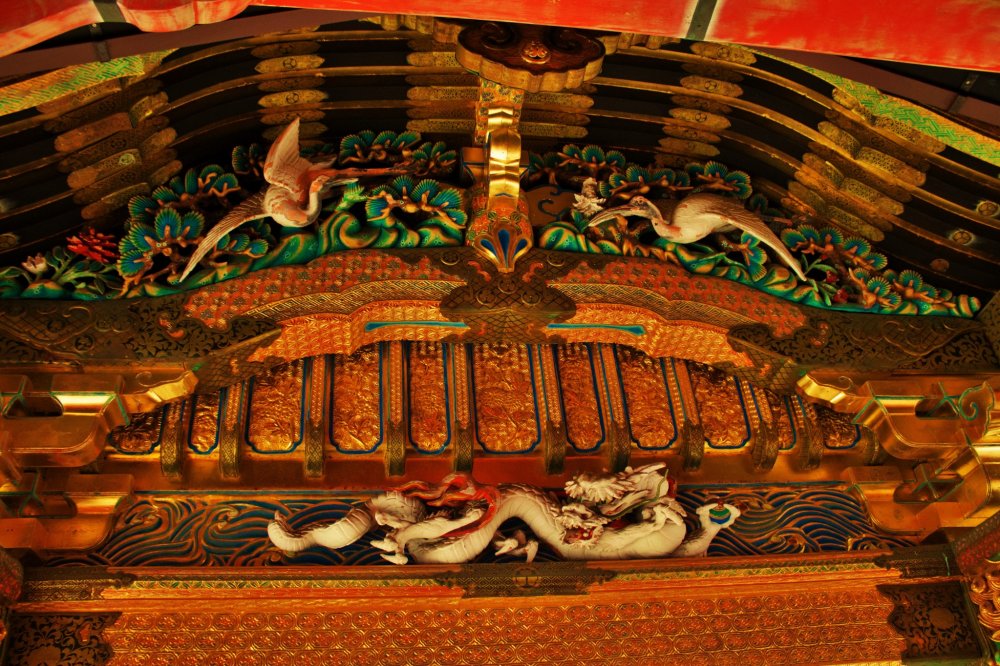
The main entrance to the Haiden, or worship hall.
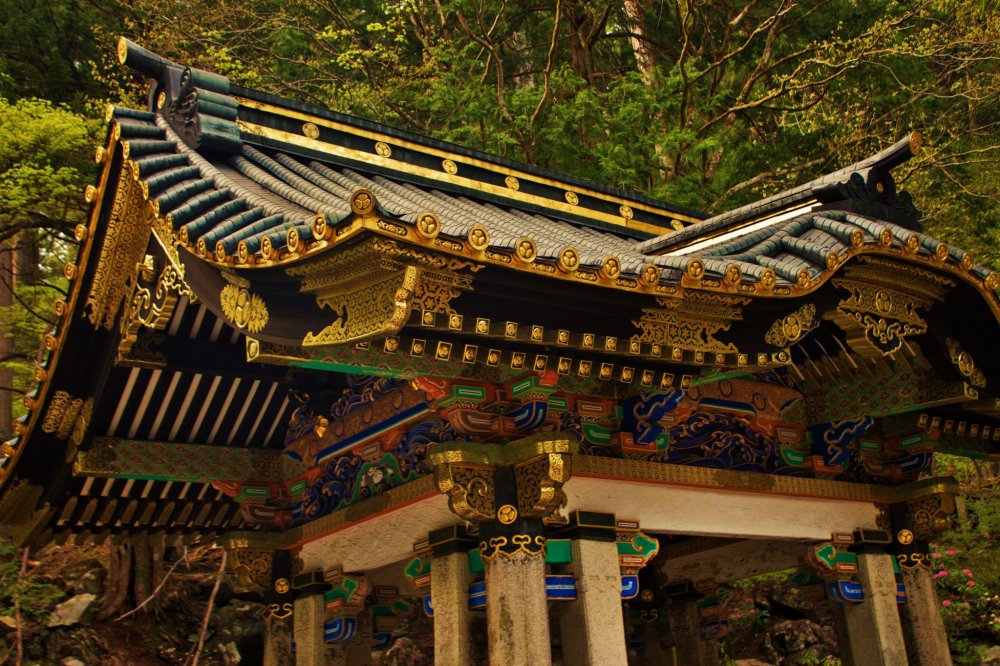
Suiban-sha of Taiyuin, an ornately decorated sacred fountain where visitors cleanse their hands and mouth before entering the temple.

Yashamon Gate of Taiyu-in Reibyō Mausoleum.

Another view of Suiban-sha of Taiyuin.

This is the Shoro, or Bell Tower. One of the two towers that flank the Yashamon Gate.

Entering the Yashamon Gate, the third gate of Taiyu-in houses four statues of Yasha demons, each colored to represent the four winds (North, South, East, and West) who stand guard. The gate is also known as Botanmon gate because of the display of peony in the carvings throughout the gate.

Entering the Yashamon Gate.

Entering the Yashamon Gate.

Entering the Yashamon Gate, one of the guardian Yasha demons.

Entering the Yashamon Gate, one of the guardian Yasha demons.

Entering the Yashamon Gate, one of the guardian Yasha demons.

Entering the Yashamon Gate, one of the guardian Yasha demons.

The ceiling of the Yashamon gate, which highlights the peony theme that the gate is known for.

The inner doors of the Yashamon gate.

The main entrance to the Haiden, or worship hall.

This is the exterior of the passage way between the Haiden (worship hall) and the Honden (inner shrine).

This is the Honden (inner shrine).

Close up of the Honden.

This is the Ryugu-mon gate, that leads to the sacred resting place, which is closed to the public.

This is the Sukibei, the latticework fence that encloses the Haiden and Honden of the outer shrine.
Leave a comment
0 comments in total
Book your trip
Find a nearby hotel
Explore some of the best nearby hotels and deals for the perfect place to stay in Japan.
Top Articles
-
![A Hidden Getaway in Yaizu, Shizuoka A Hidden Getaway in Yaizu, Shizuoka]() 1
1A Hidden Getaway in Yaizu, Shizuoka
Shizuoka - Sponsored -
![Discover Hakodate: A Vibrant Port City in Hokkaido Discover Hakodate: A Vibrant Port City in Hokkaido]() 2
2Discover Hakodate: A Vibrant Port City in Hokkaido
Hokkaido - Sponsored -
![Experience Oarai: A Quiet Fishing Town Blessed by the Bounty of the Sea Experience Oarai: A Quiet Fishing Town Blessed by the Bounty of the Sea]() 3
3Experience Oarai: A Quiet Fishing Town Blessed by the Bounty of the Sea
Ibaraki - Sponsored -
![See Southern Japan with Kirishima As Your Gateway See Southern Japan with Kirishima As Your Gateway]() 4
4See Southern Japan with Kirishima As Your Gateway
Kagoshima - Sponsored -
![An Intellectual Journey Through Fujita Tsuguharu’s Legacy in Akita An Intellectual Journey Through Fujita Tsuguharu’s Legacy in Akita]() 5
5An Intellectual Journey Through Fujita Tsuguharu’s Legacy in Akita
Akita - Sponsored -
![Discover Shiga Prefecture: Events at COCOSHIGA in Tokyo Discover Shiga Prefecture: Events at COCOSHIGA in Tokyo]() 6
6Discover Shiga Prefecture: Events at COCOSHIGA in Tokyo
Tokyo - Sponsored -
![Exploring Japan Through the Seasons: Three First-Time Classic Tours Exploring Japan Through the Seasons: Three First-Time Classic Tours]() 7
7Exploring Japan Through the Seasons: Three First-Time Classic Tours
Culture -
![A Taste of Shiga at COCOSHIGA A Taste of Shiga at COCOSHIGA]() 8
8A Taste of Shiga at COCOSHIGA
Tokyo - Sponsored -
![Miyoko Schinner: Japan Vegan Tour 2026 Miyoko Schinner: Japan Vegan Tour 2026]() 9
9Miyoko Schinner: Japan Vegan Tour 2026
Food -
![Spa Resort Hawaiians: A Tropical Escape with a Japanese Soul in Iwaki Spa Resort Hawaiians: A Tropical Escape with a Japanese Soul in Iwaki]() 10
10Spa Resort Hawaiians: A Tropical Escape with a Japanese Soul in Iwaki
Fukushima - Sponsored
-
![Tokyo Christmas Market Tokyo Christmas Market]() 1
1Tokyo Christmas Market
Tokyo -
![Guide to Bringing Medicines Into Japan Guide to Bringing Medicines Into Japan]() 2
2Guide to Bringing Medicines Into Japan
Planning -
![The Ultimate Guide to Thrifting in Tokyo The Ultimate Guide to Thrifting in Tokyo]() 3
3The Ultimate Guide to Thrifting in Tokyo
Shopping -
![Your Name: Real-Life Locations in Tokyo Your Name: Real-Life Locations in Tokyo]() 4
4Your Name: Real-Life Locations in Tokyo
Tokyo -
![Shibuya Blue Cave Illumination Shibuya Blue Cave Illumination]() 5
5Shibuya Blue Cave Illumination
Tokyo -
![Nabana no Sato Illumination Nabana no Sato Illumination]() 6
6Nabana no Sato Illumination
Mie -
![Winter in Japan: Your Seasonal Guide Winter in Japan: Your Seasonal Guide]() 7
7Winter in Japan: Your Seasonal Guide
Planning -
![Japanese Urban Legends Japanese Urban Legends]() 8
8Japanese Urban Legends
Culture -
![Bad Bunny Debí Tirar Más Fotos World Tour Bad Bunny Debí Tirar Más Fotos World Tour]() 9
9Bad Bunny Debí Tirar Más Fotos World Tour
Tokyo -
![Tokyo Auto Salon Tokyo Auto Salon]() 10
10Tokyo Auto Salon
Chiba


